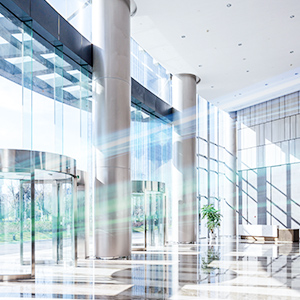Blog
Published: October 25, 2017
Colder Days are Coming, Now is the Time to Prepare Your Facility
In most regions, the hot summer days are finally behind us. Even though the temperature is falling, your HVAC system will still work hard over the coming months. October is National Energy Awareness Month...
Colder Days are Coming, Now is the Time to Prepare Your Facility
October 26, 2017

Colder Days are Coming, Now is the Time to Prepare
In most regions, the hot summer days are finally behind us. Even though the temperature is falling, your HVAC system will still work hard over the coming months. October is National Energy Awareness Month, and now is a good time to consider what improvement projects you can undertake within your building to help improve energy efficiency.
Here are a few tips and recommendations from Trane® Building Professionals that will help you save energy and lower your utility bills during the fall and winter months.
#1. Understand building changes
The way your building is used — and the hours it is occupied — may change in the fall and winter. Review building and system data to monitor occupancy rates and adjust equipment and system setpoints to support the current usage needs. Use automatic scheduling to reduce the building’s energy consumption during the holidays, when your building will likely be unoccupied.
#2. Avoid problems with proper maintenance
Proper maintenance is critical — an equipment outage is the last thing you want in the middle of a snowstorm. Check HVAC systems and equipment to determine if they are working correctly. Change filters and look for cracks in the heat exchanger to optimize system performance. You should also check the boiler and stroking valves to confirm the outside air intakes are on the lowest setting.
#3. Use your economizer wisely
In many parts of the country, fall brings dry weather with low humidity, which is perfect for taking advantage of the economizer. An air-side economizer uses the cooler outside air to reduce the indoor temperature, which is more energy efficient than cooling the recirculated indoor air. Many buildings have break-even points — the temperature at which the building starts using mechanical cooling — of 60 degrees Fahrenheit or less. In many cases, the building can be pre-cooled with outside air to run a little cooler in the mornings, so the occupied setpoint can slowly rise during the day — without compromising occupant comfort.
#4. Conduct a building walk-through
One easy way to spot energy savings and improve efficiency is to conduct a walk-through. A visual inspection can help you uncover deficiencies that are often easily fixed. For example, keep an eye out for space heaters being used in certain parts of your building. Consider the reasons why these zones are running cooler than others and how this can be addressed.
Check the building envelope during your inspection process. Verify that all exterior doors and windows are closing and sealing properly, and roof drains and filters are clear from debris.
#5. Review your plans
Equipment breakdowns and weather-related outages can happen any time of year, so it’s important to have a contingency plan in place that addresses your needs in the fall and winter. Your contingency plan should outline the processes and steps you will take to keep your building running in the event of an outage or emergency.
#6. Know your utility rates
Utility demand charges are typically more severe in the summer months, but you still have opportunities to reduce or shift demand during the fall and winter to help lower costs.
Knowing your utility billing dates is important as the seasons change. For example, if your billing cycle ends on Oct. 15, and Oct. 16 and 17 are very warm days, try to find ways to cool your building other than running the chiller for that brief window — which can cause an expensive spike in demand charges for the entire month.
Don’t let winter sneak up on you. Now is the time to make sure your building is prepared for the colder temperatures, and Trane is your partner in this effort. Trane Building Professionals are ready to help you determine your winter readiness and provide additional recommendations for improvement.
Trane and the Circle Logo are trademarks of Trane in the United States and other countries.
